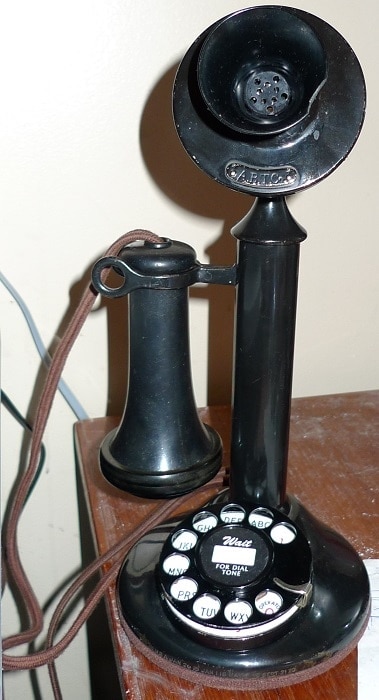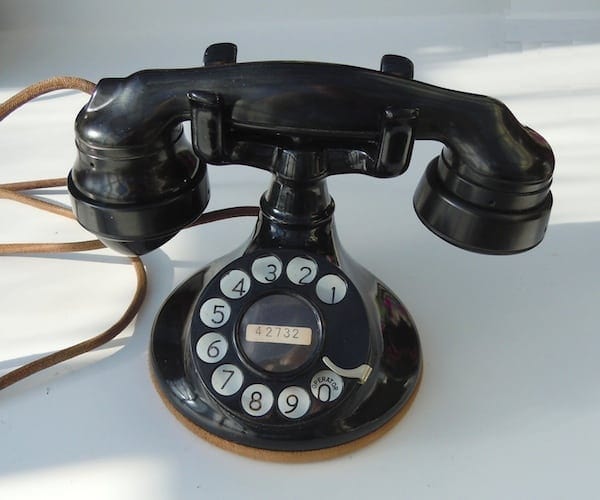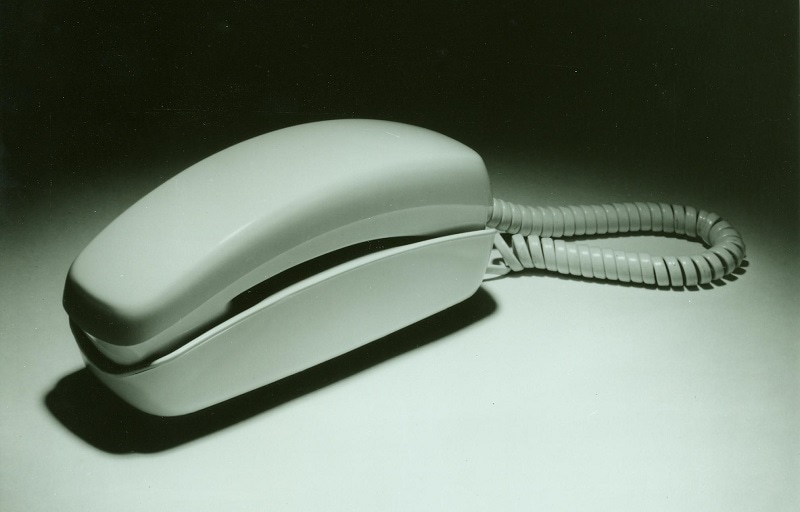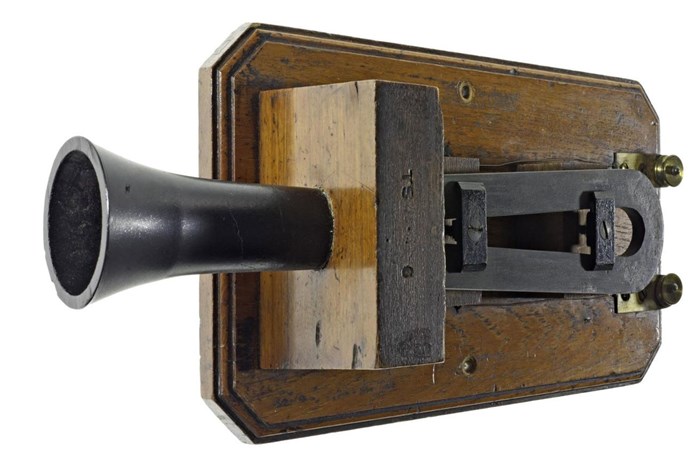The story of the invention of the telephone one is a complex one, rife with rival claims over the invention itself, and the product of numerous discoveries and individual contributions. Italian inventor Antonio Meucci appears to have invented an apparatus he call the teletrophono in the late 1840s. However credit for the invention of the telephone is given to the Scottish born inventor Alexander Graham Bell who was awarded the first telephone patent in 1876.
From Telegraph to the Invention of the Telephone
The invention of the electric telegraph in the 1830s marked the beginning of telecommunications. Now, for the first time in history messages could be sent over enormous distances in an instant. The telegraph quickly gained popularity and attempts to modify and improve the device were fervent. Successive attempts at improvements to the telegraph ultimately lead to the invention of the telephone.
Both the telegraph and the telephone are wire based electrical systems and thus similar in concept. Alexander Graham Bell was experimenting with how to send multiple messages along the same wire at one time, a technique known as multiplexing. This was the goal of several inventors at the time, including the US inventor Elisha Gray. In the early 1870s Gray was using a harmonic telegraph, which consisted of a transmitter and a receiver connected to sets of metallic reeds, in order to investigate speech transmission. A harmonic telegraph was known to be capable of sending multiple messages at the same time on a single wire by using varying frequencies. Bell also began his experiments in 1873 using a harmonic telegraph in his search for a multiplexing device but he quickly hit on the idea of using it for speech transmission too.
By 1875 Bell had proved that different frequencies could vary the strength of the electrical signal in a wire. Now all he needed to do was to develop a working transmitter that could send varying electronic currents and a working receiver that could reproduce these frequencies in audible form. On March 7th, 1876 Bell awarded a patent for his telephone as an “apparatus for transmitting vocal or other sounds telegraphically”. The telephone is considered one of the most valuable patents ever awarded by the U.S. Patent Office.
Bell’s telephone was composed of various elements that largely remained unchanged for many years. First a power source such as a battery was needed to power the electric current generated by the transmitter. The transmitter converted the speaker’s voice into a direct current and on the other end a receiver converted the current back into an audible voice. While not in use the receiver hung on a hook with a switch on it, known as a switch hook. The switch hook connects the telephone to the direct current through a loop. When the telephone is on the hook, contact to the loop is broken. Pick up the telephone and contact is restored with current now flowing through the loop. A dialer and a ringer were also critical components. Lastly an anti-sidetone circuit, and assemblage of transformers, resistors, and capacitors, was used to reduce various forms of noise and electrical feedback.
The Telephone: A Revolution in Telecommunications
The telephone continued to evolve and improve over time. Early telephones needed to be connected directly with each other and Bell quickly realized that all telephones needed to be connected to all other telephones in service for the device to be practical. By the late 1870s the first switchboard had been invented, solving the problem. By the 1880s telephone were being assigned numbers to make operations easier, introducing the first telephone numbers. For that point on the innovations haven’t stopped.



(Credit: Wikimedia Commons)
The 20th century saw enormous leaps in telephone technology. The dial tone was introduced in Germany in 1908 but it took until the 1920s until it was adapted in the United States. That same decade witnessed the first transatlantic call in 1927, from the United States to the United Kingdom and was transmitted by radio waves. Also by the 1920s it is estimated that there were over ten million telephones that were in service in the United States. The 1960s saw the appearance first Touch-Tone telephones and launch of the worlds first international communications satellite, Telstar. Around this time first cellular phone had started to appear. Digital telephone technology combined with cellular phones have drastically changed the telephone in the later part of the 20th century. Today most people have converted from using their land lines to carrying around their versatile smartphones.
Continue reading more about the exciting history of science!

Oh wow! I didn’t know a lot of this about telephones and how they progressed! Very interesting to read and learn!
Wow, It’s so amazing to know how telephones evolve and improve over time. I have learned a lot today. This is very informative. Thank you for sharing this!
It is amazing how phones changed over the years. I wonder if one day something could replace smartphones that everyone is using currently.
Ukeveryday
We had those telephones in the 80’s and 90’s and YES! I wonder how fast we have improved so much with technology 🙂
It is so wild how far we have come when it comes to phones. I couldn’t even imagine using the original phone in this day and age.
This was such a nice read. The simple telephone has gone a long ways since, but of course props to the early discovery for making this happen. Can’t imagine the world now without it!
amazing very informative about telephone. Amazing revolution of telephone.
thanks for the history and insight shared.
my mom and sister would love this!